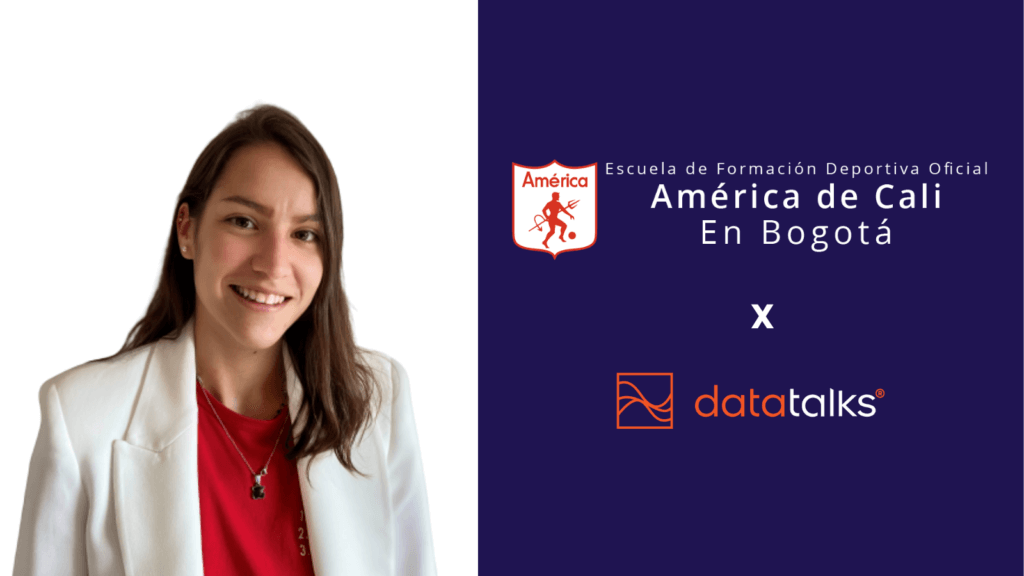
As a company, we have the vision for “a world where it’s simple to create an impact and make a difference”. So, whenever we have the privilege to meet others in the sports industry who share our vision, we are, firstly, always moved. But secondly, this ultimately affirms and strengthen our resolve to commit to fulfilling our vision because we know that there is a need for the type of work we do. This was indeed the case when we sat down with America F.C’s Maria Caicedo Cabrera. We talked about how America F.C is using football for child development.
As a company, we understand the important role sports plays in society. We have our initiative women in sports: beyond the hashtag. But did you know that we are also passionate about sports as a tool for equality, diversity, and inclusion? That’s why this conversation about football for child development is near and dear to us.
Before we dive right in...
Subscribe to our blog today to ensure that you never miss valuable posts such as this one. We are passionate about helping sports organizations deliver a world-class fan experience, because better fan experience means better business. So why not use this opportunity to the fullest?

Meet Maria Caicedo Cabrera

At just 25, Maria is the director of America de Cali official sports training school in Bogota. She has many qualifications under her belt including a Bachelor’s in psychology, a Master’s degree in executive coaching, sports, and high-performance psychology, and an MBA. Although she studied in Spain and had access to one of the most advanced sports industries in the world, she decided to relocate back to Colombia. Because, in her own words, she wanted to make an impact in her home country first. And that she is indeed doing with all her work with America F.C using football for child development.
Enjoy this interview that we did with Maria.
How it all started
Lorraine: Maria do you want to tell us a little bit about where you are today? What kind of work do you do and who do you work with?
Maria: I was finishing my MBA, and I was working in an NGO. At that moment I was collapsing because there was a lot of work. Then I received a call from someone who had helped me get my internship in the soccer [football] league before. And this person starts talking to me and they’re like, what are you doing? What are your projects right now? Do you want to go back into sports? I have a project that I want to do, I want to do it here [in Bogota] and I want you to lead it. I thought, whoa great opportunity there but tell me more about it.
So basically in Colombia, the national team is composed of players from very different regions. So there are a lot of teams and there’s another city here, which is called Cali. And they have a team which is called America de Cali. What this person wanted to do was bring part of that team into our town, which is the capital city.
America F.C’s goal
Maria (Continued): Something that we have been discovering is that even though we have the community and the population in the capital city, we don’t have a lot of [local] talent to promote outside of Colombia. What we are discovering is that the talent comes from other places. And the other places are usually places that have a small number of resources. What we want to do with this project is give the opportunity to the locals of the capital city and the people who come from outside as well, and have the opportunity to come to excel their capabilities and go to the professional level but [also] just outside of being in the national team. Our project is focused and, has been developed for little kids [in] childhood and adolescence.
We’re going through changes, but we also see our project as a project of social impact because we live in a city where drugs and other substances are well known when you think of Colombia. That happened to me a lot. When I was in Spain, when they thought about Colombia, they were thinking about cocaine and Pablo Escobar. And it’s not something that makes us very proud, but at the same time, we know that it’s part of our story. So it’s something that still continues to happen. The thing with the narco trafficking and, all the violence, we see that sports can be a coping mechanism. It can be a coping mechanism and a kind of a getaway from that world in which we live. And for the little kids to develop a passion or a hobby or a coping mechanism in which they can feel safe.
So that is the idea of the project.
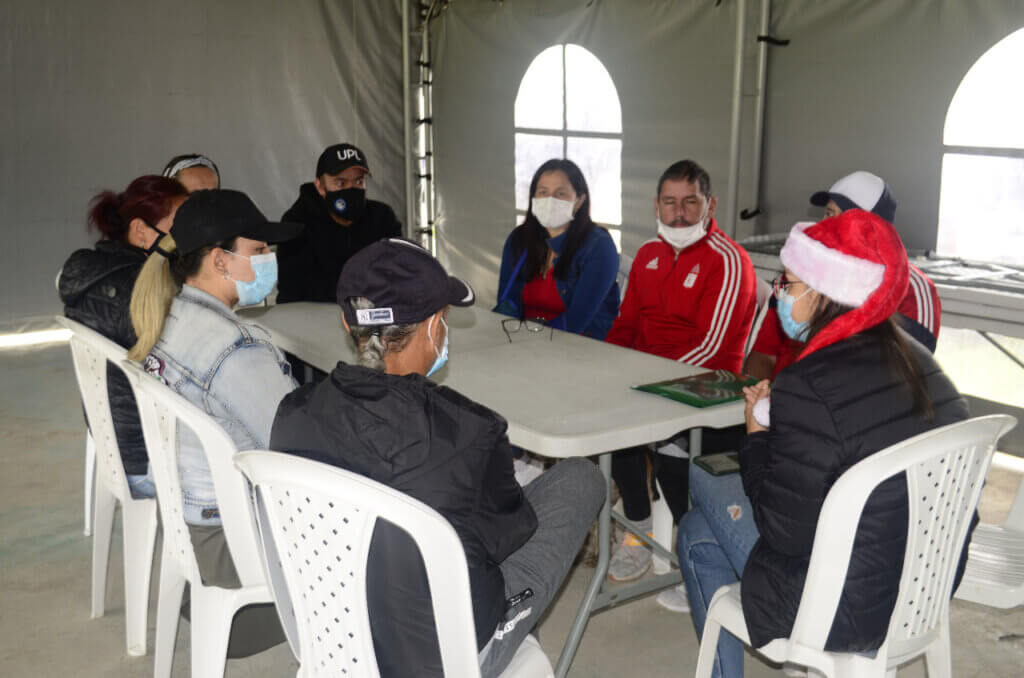
The results so far
Helping parents nurture their children’s interest in football
Lorraine: What have been some of the results you have seen so far?
Maria: One of the main things is the seminars that we have with the parents focusing on the psychological level. The main focus was on motivation, but it was really nice to see them involved in the project. Not just, “I’m gonna leave my kid there so he can do whatever he wants and not be home and not be on the cell phone or on the laptop”. Because there are some parents that are like that. They’re just like, I need my alone time so just go. They needed to understand that the father or mother figure and the motivation that they’re given to their child can mark, the further development of the hobby, the motor aspect of it, and just the development itself into what motivation is.
Something that [often] happens because of passion is that ‘I want to motivate my kid’, but I start yelling at them. Things like, no, how did you miss that goal? What happened to you? So that energy is transmitted. And what starts to happen is that they [the kids] feel more tension. So the muscles start to get rigid and if they want to excel and do good, because their muscles are rigid they fall or something happens and then they break something and that’s it! Six months out.
So I think these types of spaces that we have created with them [the parents] have created an impact on how they see the sport itself. Also understanding that it goes into a deeper level of understanding. It’s not just something that you have to do one hour or two hours a day, but your words have meaning and have an impact.
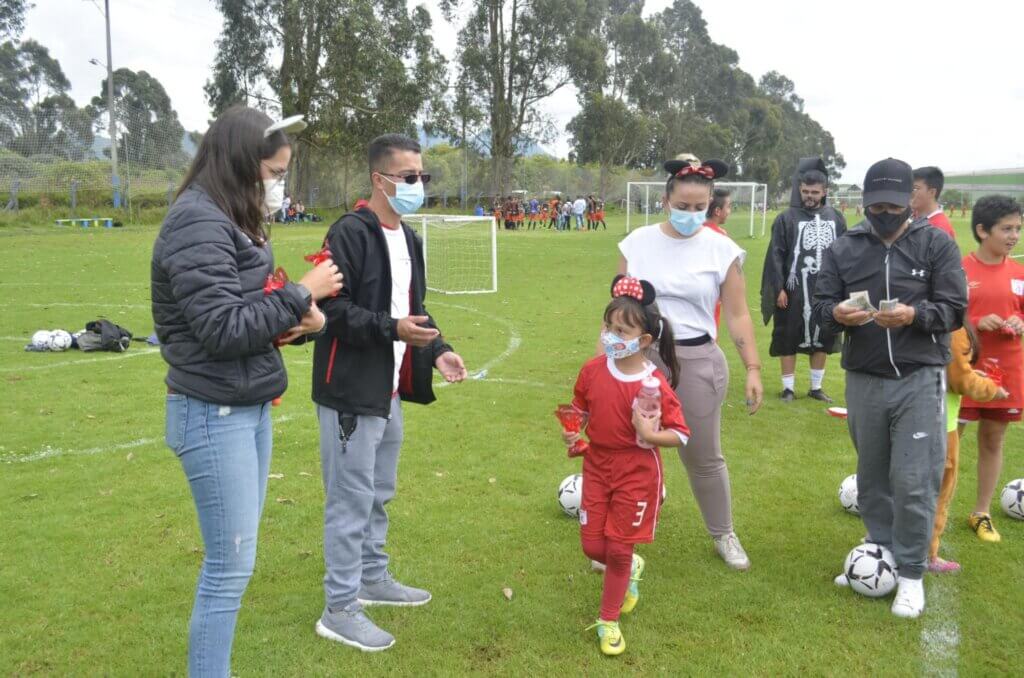
Supporting young players’ career development
Maria (continued): We also had a kid who was like 16, 17 going into that stage of,” hmm I need to study something, but I want to be a professional player”. And he was with us since the beginning. And when we started the club, he came to us and he told us that he was going to leave. So we were kind of worried because no, this sport is something that he likes. But he was like, “No, I want to leave because I want to study. I want to be a coach, I want to be someone, but I need to take the time and put all of my efforts into studying. I want to continue doing my sports but on the side. My main objective right now is just studying”.
So for us, it was really hard because we were losing someone, but at the same time, it was very mature to come and talk to us first, but also to give another direction to his life and his goal based on the experience that we have taught him.
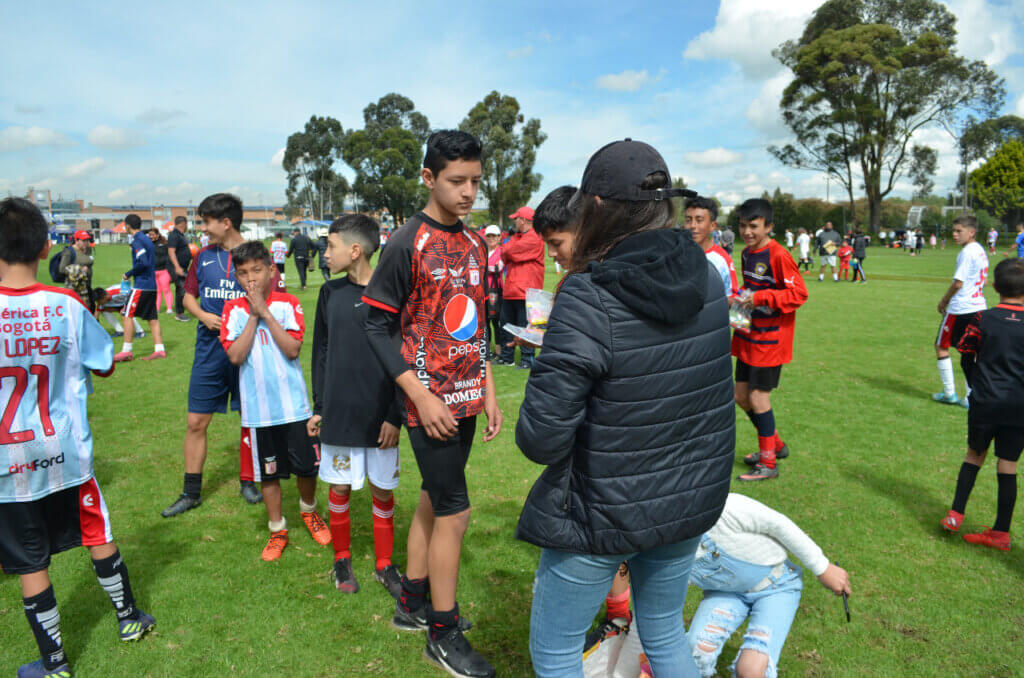
Empowering kids from underprivileged backgrounds
Maria (continued): I think the third point that is just in general, that we have applied to children, who come from very chaotic areas and different areas in Colombia, which are considered like red zones because of violence, they come and they expect to have, the house, the cellphone, the studies, and everything [from the organization for free], and we don’t do it. What we’re doing is that we have the main beginning of the season, and we have a review of the children [‘s commitment] that are coming.
And we saw a few of them who excelled in their capabilities. So we give them a discount and we’re working with that. So it’s been like three months since they all started. And just last week, one of the kids who is doing really well, I told him you have another 10% discount on the payment because we see that you’re improving. That’s kind of like another motivational aspect for them. They need to understand that they need to give in order to get, and it’s a balanced relationship in that aspect.
Maria’s hopes for the future …
Lorraine: What are your aspirations for what you’re doing now, and just for the future of sports in general. What do you hope to see?
… her hopes for America de Cali official sports training school
Maria: I want this to continue growing and continue creating an impact. And I hope that the main objective and structure that we have given are not lost during the process because as we continue to grow, it’s more difficult to control certain things or certain details that we have been paying attention to. When we started in August, at the end of last year, we had like 20 players and right now we have 92. So it’s just escalating very quickly. With every new month, I need another person in charge of something. And I don’t want to lose that. I try to learn all of the names of the players so that when I go to the field, they talk to me about someone, I recognize the person. I want to continue that. And I want my team to continue to do that.
In the large scope of what we can grow into, my main goal for the organization is just to continue to structure work from there as we continue to grow further. And just become one of the main organizations that promote the formative level of the player.
And why not maybe go into different sports? Maybe we can reach a level in which soccer [football] is already fulfilled. So maybe we can go into basketball or just bring with us another sport that can create some other impact on another population.
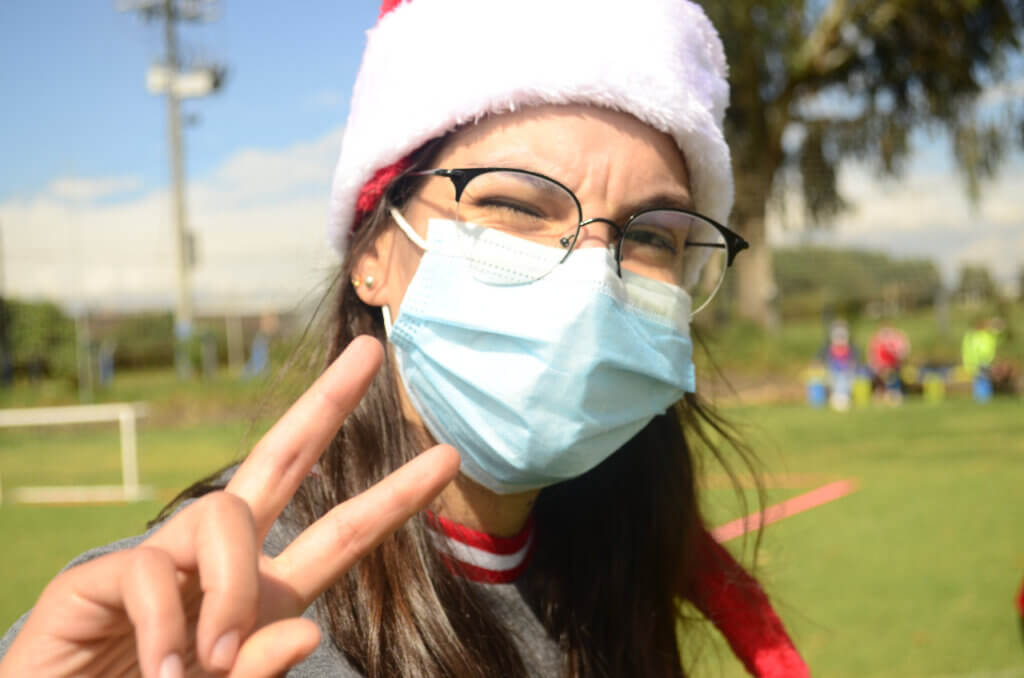
Creating more space for girls
Maria (continued): Also, right now we don’t have girls. We started with three, four girls who were very little. But we also want to go into women’s sports because in our personal case, in Colombia, the female soccer [football] team qualified for the soccer world cup. And the male team didn’t. [So we] also want to promote these spaces for them [girls and women] to feel secure, safe, and to feel that they’re being listened to. And we want to promote equality in what people think professional [football] is. So at an organizational level, I want to go, into that aspect. That’s what I see as a goal.
And on a personal level, as a female worker, I just want to focus on creating an impact, which is something that I see [already] happening. Just on Tuesday. I was in the Federation because we had a meeting with other clubs. Out of a hundred, 85 were male and the others were female. And I was the youngest. In my head, I was like, how is this possible?
We need to start creating a change and an impact so the girl next door or someone outside our social circle can see, maybe that can be me. Maybe I don’t have to be behind these male characters but maybe I can do something for myself. And we’re seeing that right now. That right down here, we have two clubs that only accept girls because they want to focus on the female aspect of it.
So I think that’s also going into empowerment and empowering other women. That’s my main goal.

To try it out yourself, check out the Data Talks Sports CDP in action >>
Conclusion … what you can learn from America F.C’s approach
Using football for child development is nothing new. Sports play an integral part in the development of children. This is a proven fact. However, how you approach the goal of using football for child development makes all the difference. So, we are going to highlight a few ways in which America F.C is excelling. Feel free to take inspiration and run with it.

Key factors to consider when embarking on using football for child development

Involve the parents or guardians of the child
The first key factor in using football for child development is to involve the parents or guardians of the child. America F.C is doing this. And so should you.
Just having the parents present is not enough though. Just like Maria said, it is important to ensure that the parents understand the importance of their own behaviors and attitudes.

“It is important to remember that the attitudes and behavior taught to children in sports carry over to adult life. Parents should take an active role in helping their child develop good sportsmanship. To help your child get the most out of sports, you need to be actively involved.”

Empower children by incentivizing hard work
Another key factor when embarking on the journey of using football for child development is to empower children by incentivizing hard work. Some organizations, in the name of supporting underprivileged children, often give those kids freebies. However, this is a pitfall that you should avoid. Maria highlighted this as a key factor in their approach to using football for child development. Instead of just giving the kids freebies, they give performance-based discounts. This is a powerful approach because:
“If you feel you have invested in something, especially learning something new, you’ll take it a lot more seriously … in summary, if you want to achieve real success you probably have to roll up your sleeves and get your elbows dirty. Unfortunately that’s the only way success comes”

Keep the personal touch
This is something that goes without saying. But we still mention it just to ensure that we are all on the same page. Learning in a group can be very difficult, no matter how good the team is. So, when using football for child development, kids need the personal touch from their coaches. Small things like learning all the kids’ names, just like Maria emphasized, make all the difference. So while your organization grows, make sure that you don’t compromise on this.

Work smarter, not harder
When we were speaking with Maria, she mentioned that she had applied to our women in sports initiative because she was impressed with all the insights that we share with sports organizations. Insights such as the importance of working data-driven. Another example is all the work we do to educate sports organizations about implementing a sports Customer Data Platform to achieve their organizational goals.
Research and our own experience with our customers continue to stress that all sports organizations need to implement a CDP to get better success. Well, working with football for child development is no exception. Colleges and sports academies can benefit from a CDP in various ways:
- Academies just like any other sports organization need sponsorship. The sports CDP excels in this area. There are many reasons why using a sports CDP to boost your sponsorship is the best. The main one is that you get consistent, long-term, and compounded results.
- As your academy grows, the importance of keeping communication hyper-personalized becomes even more important. In fact, that’s what Maria also said. That her goal is to ensure that she knows everyone’s name and can keep that personal communication going. A CDP helps you do this consistently and on a large scale. Therefore, using a sports CDP becomes crucial.
- When dealing with information about minors, for example, it is crucial that your marketing systems are privacy regulation and GDPR compliant. And the CDP is the absolute best for ensuring this.
So why not try our demo today to see what this would look like for your organization.

Getting started is easy
Explore Demo Now >>
Our invitation to you
If you are in the sports industry either as a woman in sports, an ally of women in sports, or work with children, we would love to hear from you. We are always looking for opportunities to collaborate with people like you. We have so far, worked with amazing women in sports such as Arianna Criscione of N3XT Sports and Fiona Green of Winners FDD. And of course, Maria Caicedo Cabrera, who is doing incredible things with America F.C using football for child development.
Get in touch with us so we can share with our amazing audience all the great things you have been doing to make our beloved industry more equal, diverse, and inclusive.
Leave a Reply